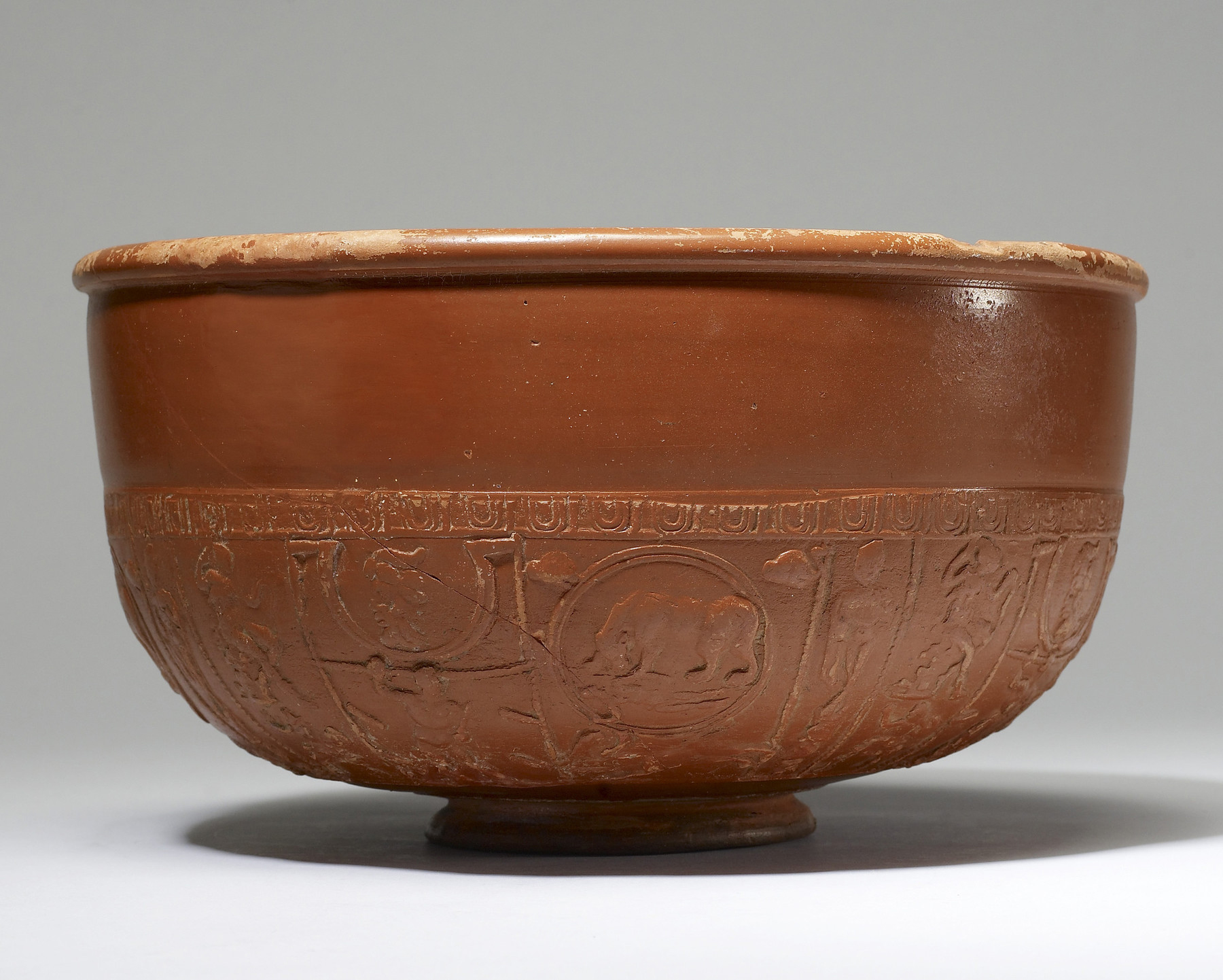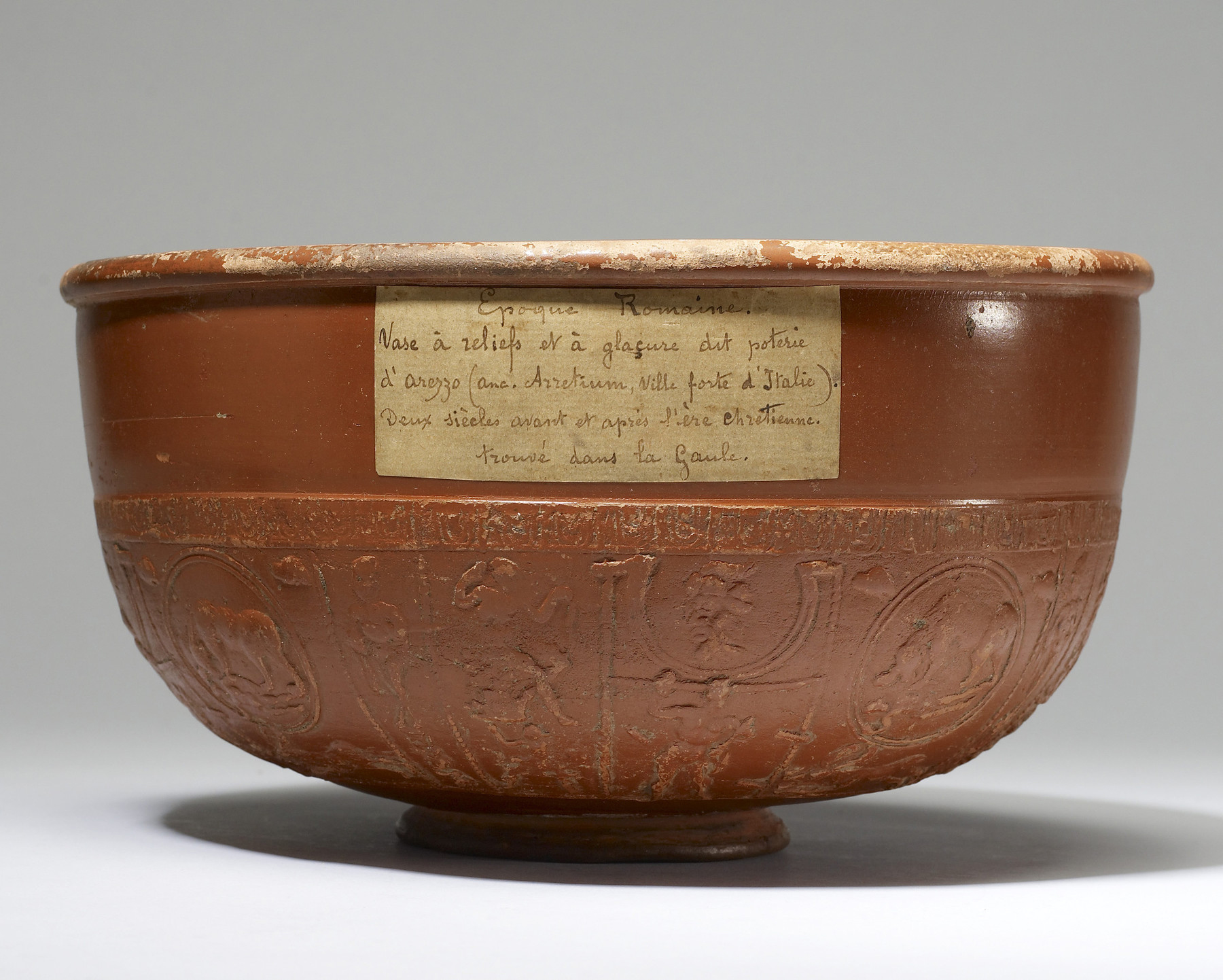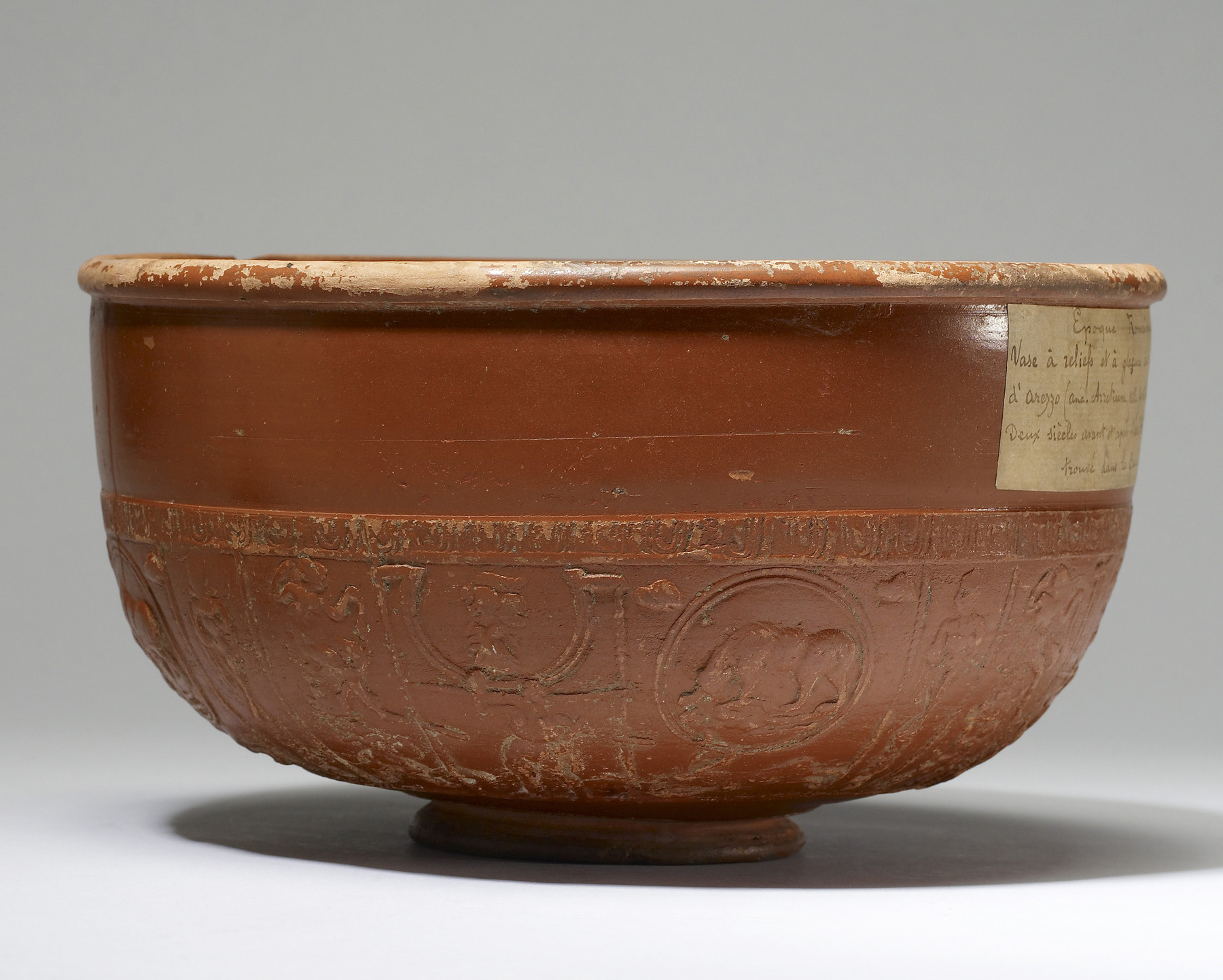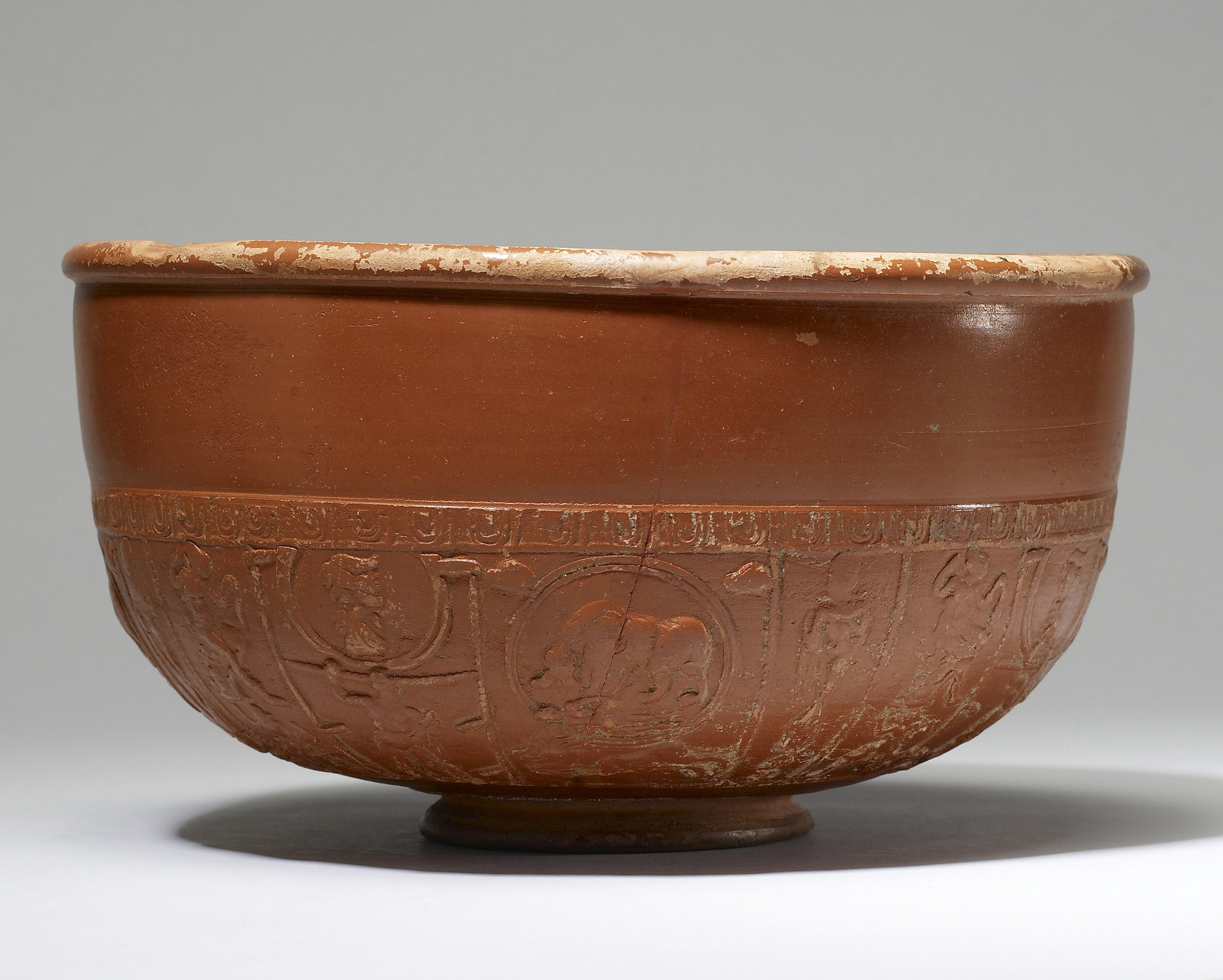Bowl with Mythological Figures in Relief
(Roman Empire )
Crafted in a mold that was impressed with stamps, the bottom portion of this bowl is filled with relief decoration of mythological figures. The lively mythological scenes are framed on the top with a variation on the egg-and-dart motif and a wide, plain rim. Four distinct motifs, each consisting of two stamps, repeat four times around the bowl. A statue on a pedestal, perhaps Apollo or Dionysus, stands above a dolphin. Next a woman seated on a rock lifts her veil, while beneath her an Amazon runs with her shield. A satyr head in a semicirclular frame hovers above the standing figure of Zeus with his thunderbolt, and finally a leaping stag appears below a circular frame that contains a bear before a corpse.
Terra sigillata is a type of fine Roman ceramic known for its relief decoration and smooth red slip. The vessel and decorations were formed in a mold and were sometimes embellished with stamps, roller-dies, appliqués, barbotine, and incision. This type of pottery emerged around 40 BCE in Arretium (modern Arezzo) in central Italy and had an enormous influence across the Empire. In Gaul (modern France), cities like Lezoux, Montans, and the ancient site of La Graufesenque developed into prolific centers of terra sigillata wares. A potter’s name-stamp is almost always impressed on the vessel either on the floor or as part of the relief decoration.
Inscription
Provenance
Provenance (from the French provenir, 'to come from/forth') is the chronology of the ownership, custody, or location of a historical object. Learn more about provenance at the Walters.
Jacob Hirsch, Paris and New York [date and mode of acquisition unknown]; Walters Art Museum, 1949, by purchase.
Measurements
H: 5 1/2 × Diam: 10 1/8 in. (14 × 25.7 cm)
Credit Line
Museum purchase, 1949
Location in Museum
Not on view
Accession Number
In libraries, galleries, museums, and archives, an accession number is a unique identifier assigned to each object in the collection.
In libraries, galleries, museums, and archives, an accession number is a unique identifier assigned to each object in the collection.
48.2016










